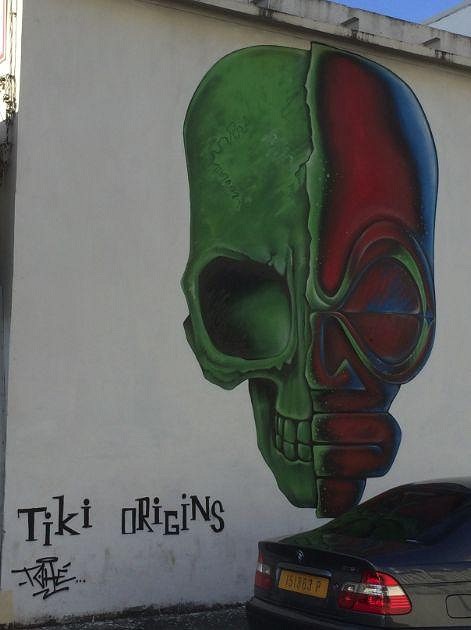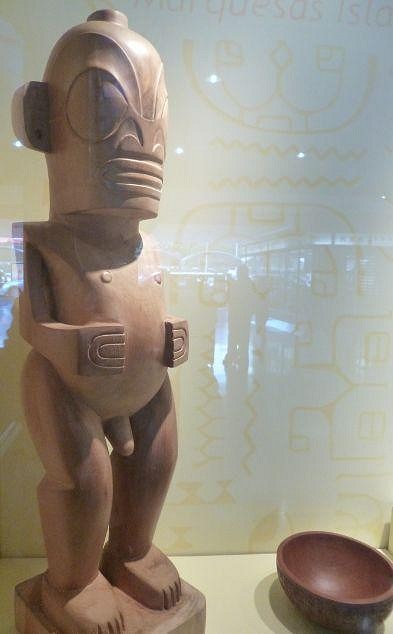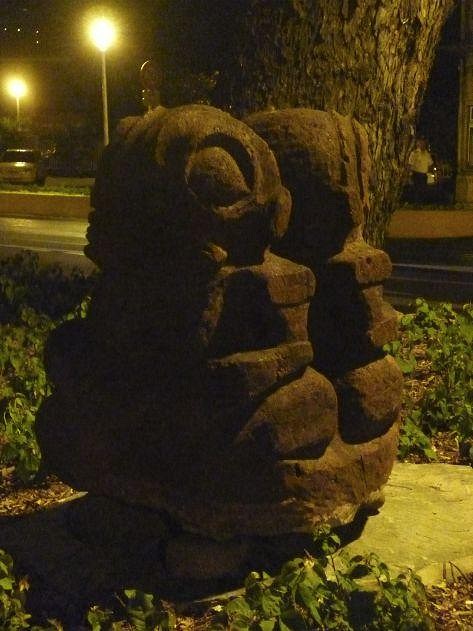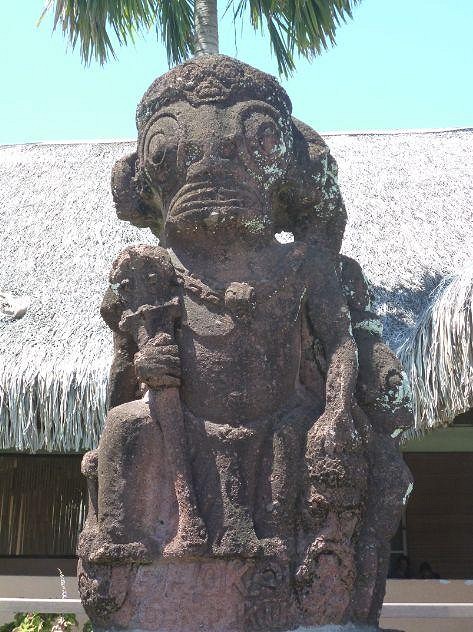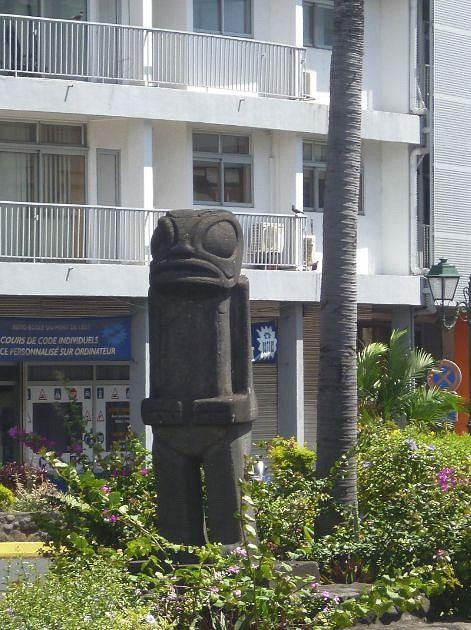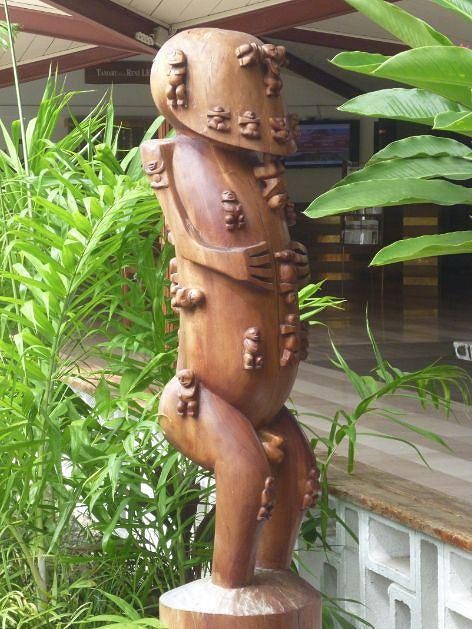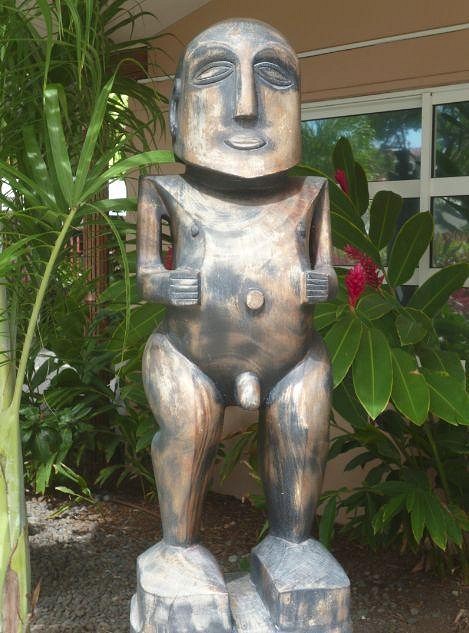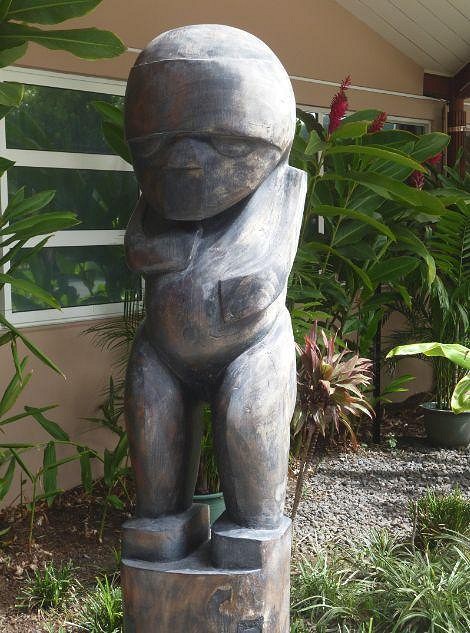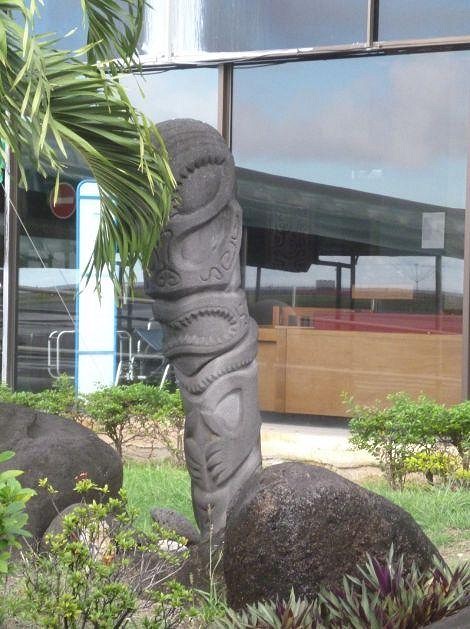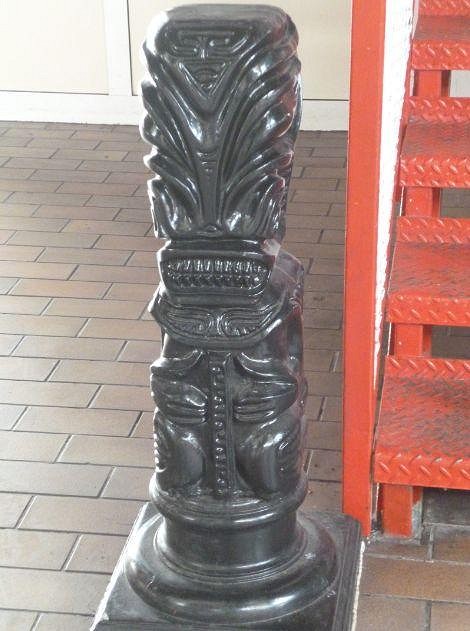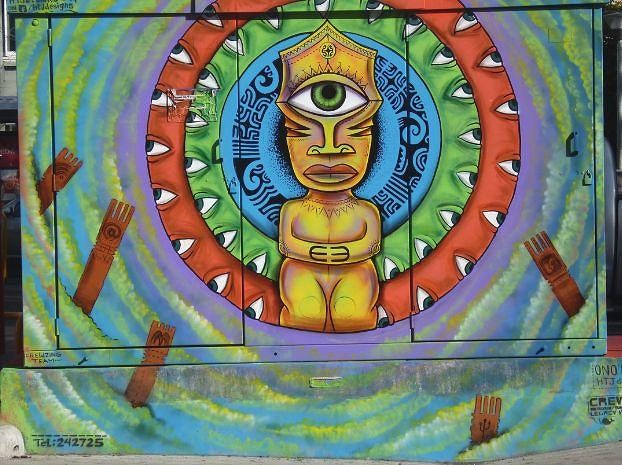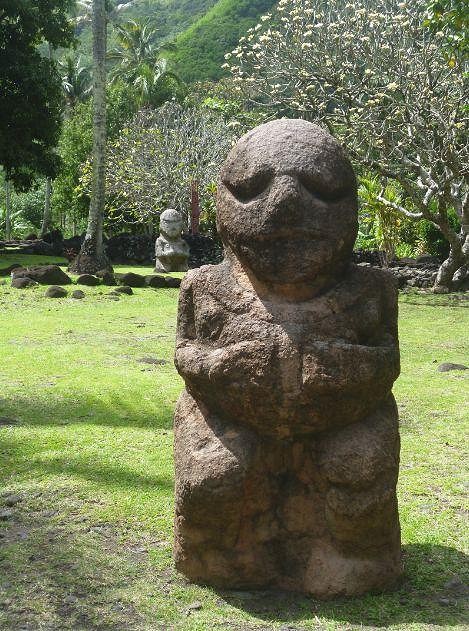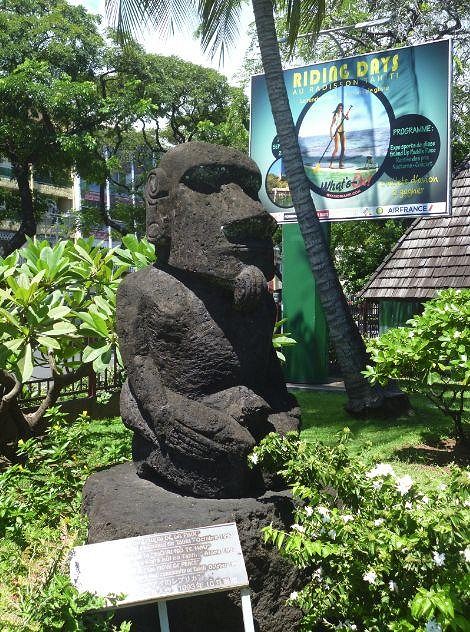Tiki Central / Tiki Travel / Club Nouméa's Tahitian Tiki Tour (fortified with added Marquesas)
Post #730093 by Club Nouméa on Wed, Oct 22, 2014 6:18 AM
|
CN
Club Nouméa
Posted
posted
on
Wed, Oct 22, 2014 6:18 AM
Tiki Origins
The majority of Tahiti's tikis, whether painted or carved, originate from the Marquesas:
Mini-museum display at Faa'a Airport: carving by Joseph Auch and Daniel Tamata, 2011. A copy of a carving held in the Château-Musée de Boulogne-sur-Mer (France).
Twin Marquesan tikis outside the French High Commissioner's building.
A traditional Marquesan headhunter tiki outside the Fare in the grounds of Papeete's City Hall (note the very Romano-Gallic-looking severed head :) )
A modern, stylised Marquesan tiki at the intersection at the end of Rue Paul Gauguin. Marquesan tikis are not the only style to be seen in public statuary on Tahiti. Other authentic styles do get a look-in:
Austral Islands tiki on the grounds of the French Polynesian Territorial Assembly. Also on display at the Territorial Assembly are tikis from the Society Islands:
This one looks Tahitian...
While this female figure at the Territorial Assembly is a copy of a tiki collected during Cook's second voyage, from somewhere in the Society Islands (1773). Other tikis on Tahiti are more generic:
The first tiki visitors to Tahiti see; Faa'a Airport arrivals terminal.
Staircase tiki, Papeete market. And some are cheekily unconventional and defy categorisation:
Mural on a power sub-station outside the McDonald's on Rue Général de Gaulle. And getting back to our very authentic-looking tikis at Arahurahu marae....
They are actually castings of two female tiki statues from the island of Raivavae, in the Austral Islands.
And then there's this very well-endowed and goateed Easter Islander placed prominently outside Papeete's tourist information centre who made me do a real double-take, until I read the plaque in front of him, indicating he was a gift to the Tahitians from the local Rapa-Nuian community. To sum up, Tahiti's tikis are now as varied as the population of the island itself, which hosts islanders from all over French Polynesia and even further afield. In that respect, they reflect the cultural diversity of 21st century Tahiti. Very happily, it is clear, on the eve of the 200th anniversary of King Pomare II's destruction of the island's tikis at the behest of a coterie of English missionaries, that Tahiti has been thoroughly recolonised by tikis, some of whom have come from very far afield indeed. And it looks like they are there to stay. :) Next instalment: tiki signage and graphic art on Tahiti
[ Edited by: Club Nouméa 2014-10-22 06:34 ] |

